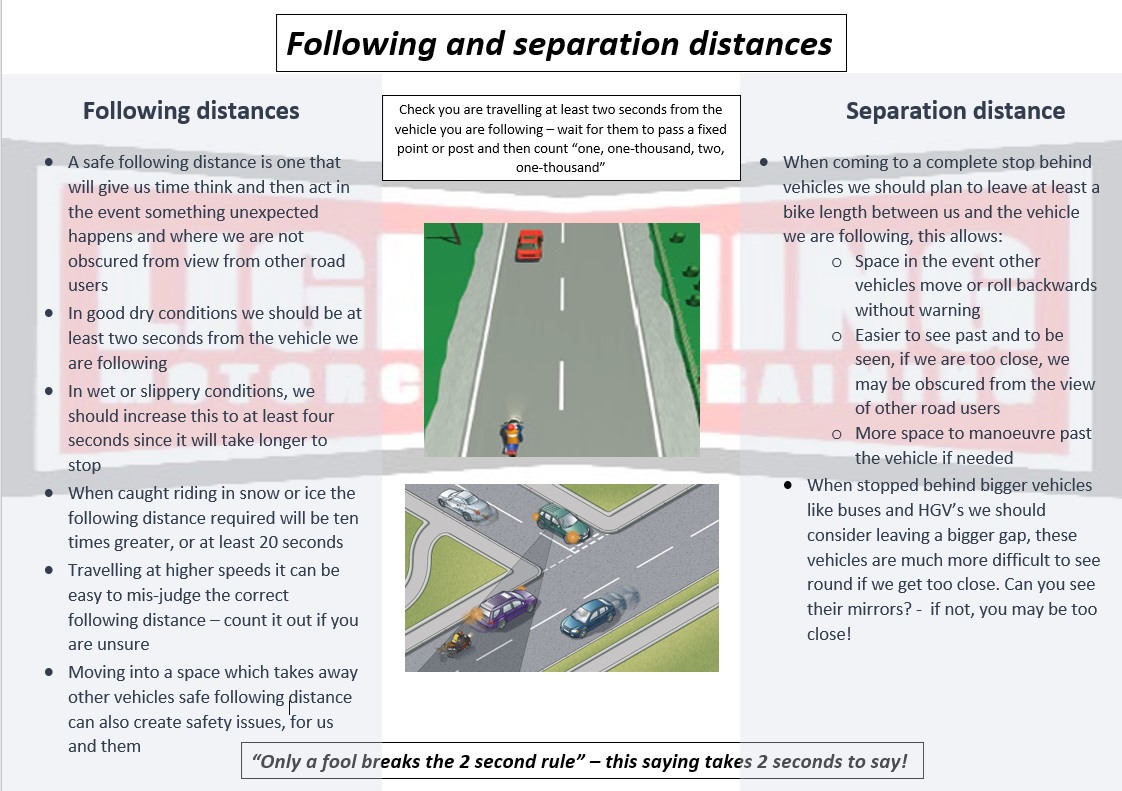Following and Seperation Distances

Following and Separation Distances
Interestingly this is one of the most common causes for failing a Module 2 test – and rightly so.
Motorcycles find it very difficult to brake effectively in anything other than a straight line on a reasonably good surface. Even motorways have shallow curves that can make this difficult. In addition to the issues of braking, motorcyles are very easily obscured by other vehicles, particularly vans, buses and lorries. Certain types of hazard are of almost no threat to four wheels but are very serious for two; such as a brick lying in the centre of a lane or an open inspection cover. We need time to react. Finally, it is worth considering that the vast majority of accidents occur when one or more of the parties involved are unable to stop in the available space.
There are four key occasions where students run into trouble with following distances:
- Pulling up too close to the vehicle in front (particularly vans, lorries or buses) in slow or stationary traffic. When pulling up behind a car ideally you should be at least one bike length back. For vans, lorries and buses you want to be in a position where you can see (and be seen) in at least one mirror.
- Joining a dual carriageway; typically by not adjusting to the change of speed limit by increasing your gap. Use the 2 (or 4) second rule.
- Overtaking on a dual carriageway – as the car in the outside lane passes you move out too soon and thereby get too close to this vehicle (this is often a result of bad driving habits)
- Not responding to a closing gap. More often than not this is where a student is keeping a safe distance from the vehicle in front on a dual carriageway, but fails to respond when another vehicle moves into this gap…



